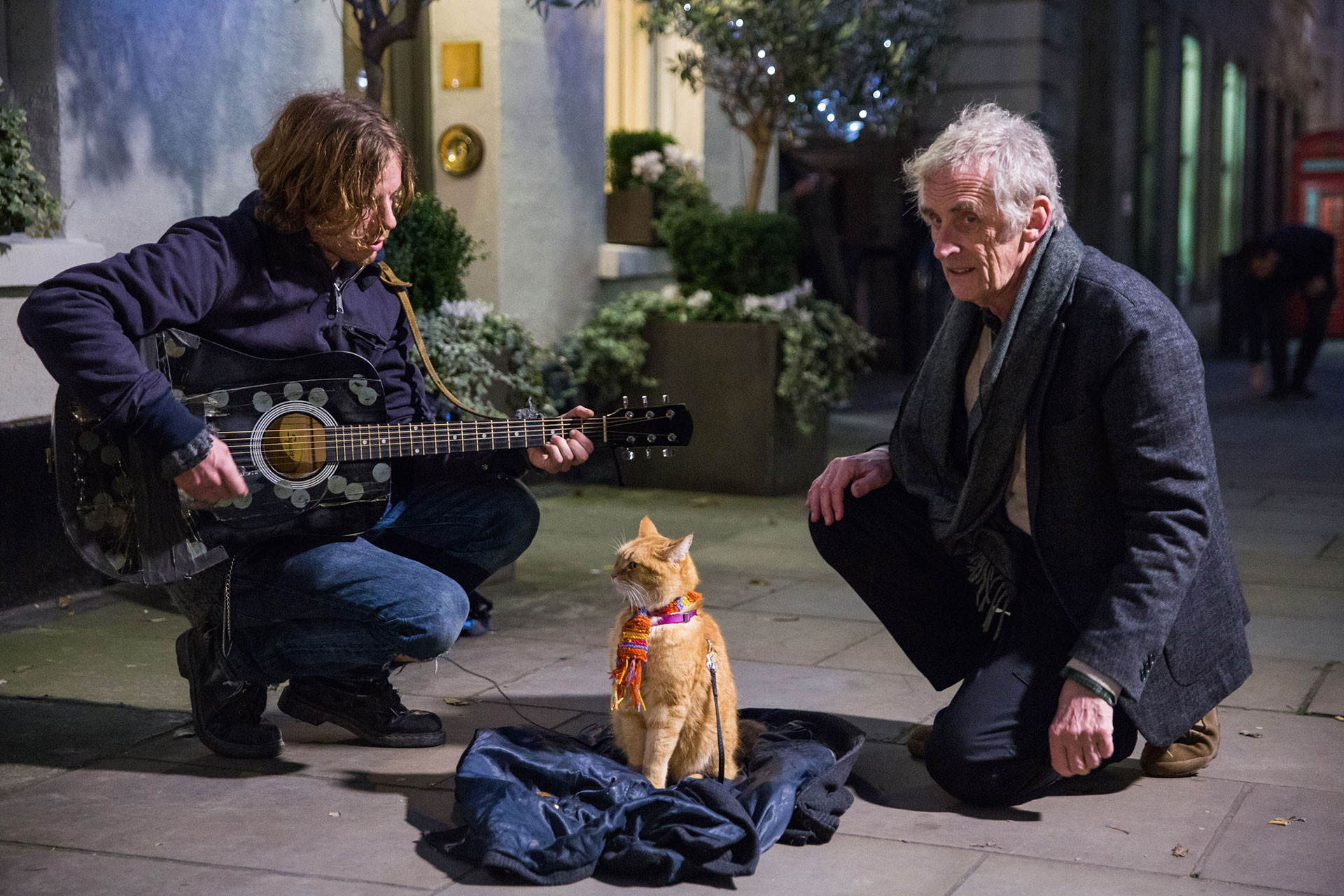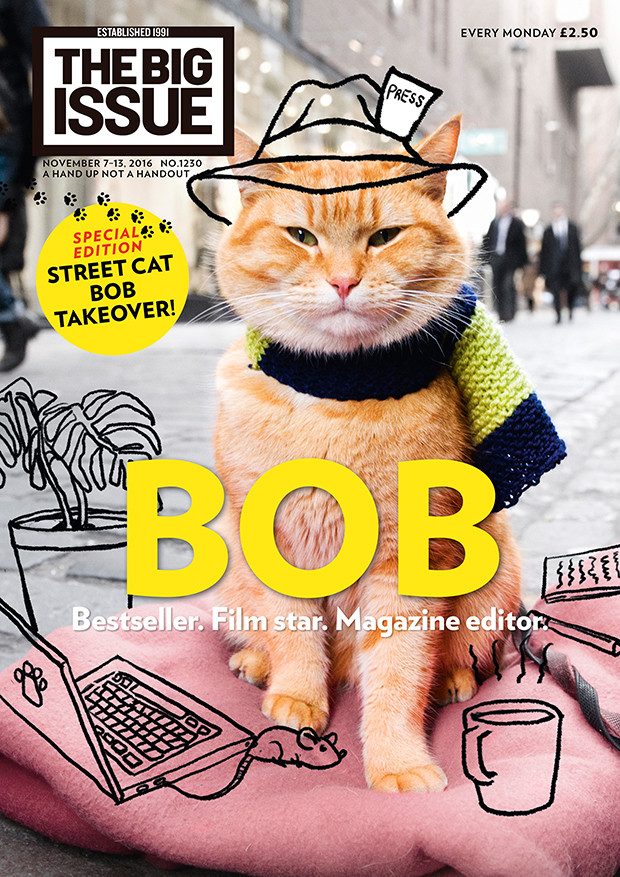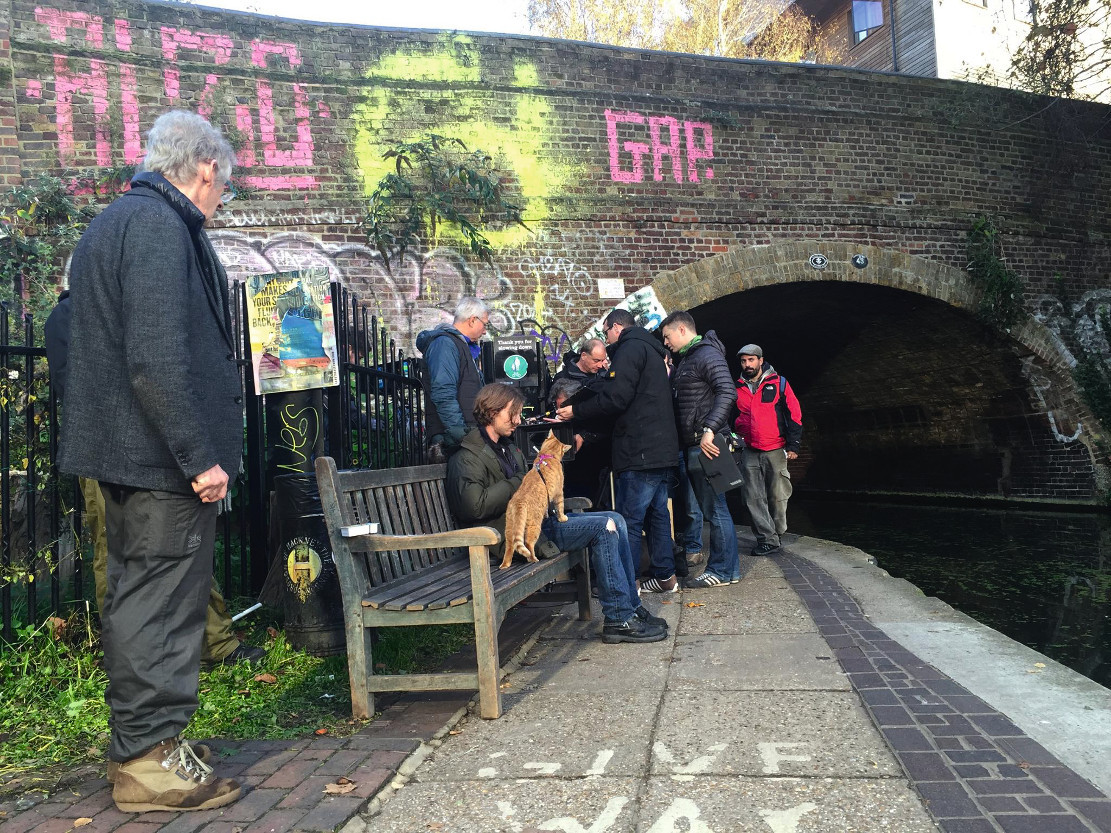The filming of “A Street Cat Named Bob” was always going to be a unique experience, transforming a deeply personal story into a major motion picture. But what truly made it extraordinary was the unexpected and utterly charming performance of a very special cast member: Bob himself. What began as a misty morning shoot on the Millennium Bridge soon led to the bustling streets of Covent Garden, and it was there, amidst the cinematic chaos, that Bob’s natural talent shone brighter than anyone could have imagined.
It was an evening in Covent Garden, outside Bow Street Magistrates, where Luke Treadaway, the actor portraying James Bowen, was filming a scene. He was busking, serenading the fictional street with ‘Silent Night’. Director Roger Spottiswoode, having already been charmed by Bob during pre-production, saw an opportunity to include the ginger feline in a shot. It was, after all, Bob’s natural habitat. He had spent countless hours in Covent Garden alongside James, a steadfast companion in the real-life story of recovery and friendship.
But when the cameras rolled, Bob didn’t just sit there. As extras strolled by, dropping coins into the guitar case, Bob looked up at each one and gave a distinct nod, as if acknowledging their generosity. Spottiswoode was stunned. He watched, questioning if he had truly witnessed what he thought he had. Take after take, Bob repeated his subtle, yet captivating, performance. It was clear: Bob wasn’t just present; he was performing.
 Luke Treadaway on set with director Roger Spottiswoode and Street Cat Bob
Luke Treadaway on set with director Roger Spottiswoode and Street Cat Bob
This impromptu audition changed everything. From that moment on, Bob became an integral part of the film. He appeared in scene after scene, his presence becoming almost constant, both on location and at Twickenham Studios. There, sets had been meticulously built to replicate James’s North London flat, the very place Bob had transformed into a home. Bob adapted to studio life with surprising ease. In one scene, Luke (as James) is having dinner with Betty, his love interest played by Ruta Gedmintas. Betty, a committed vegan, offers Bob tofu. Now, Oscar, one of the other feline actors, had readily devoured the tofu – food is food, after all. But when it was Bob’s turn, he sniffed the tofu, let out a low growl, and pushed it away, perfectly mirroring the script’s direction. It was uncanny.
As Bob’s involvement grew, so did his comfort and understanding of the filming process. He became so attuned to the rhythm of the set that he could differentiate between filming and downtime. When the studio recording light switched from red to green, signaling the end of a take, Bob knew his work was done. He’d promptly follow the cables out the door and head straight to his “dressing room,” where he would, with no uncertain terms, demand his meal.
Bob’s culinary preferences became legendary. Packets of Dairylea Dunkers became the unofficial currency on set, readily available to encourage, coax, or simply reward Bob. There was one memorable day near the Actors’ Church in Covent Garden when a particularly uncooperative Bob needed a mountain of Dunkers to elicit his signature high five.
During these moments, James Bowen transitioned into Bob’s handler and impromptu acting coach. He developed a range of techniques to keep Bob engaged and focused.
 James Bowen using a laser pen to direct Bob's gaze during filming of A Street Cat Named Bob movie
James Bowen using a laser pen to direct Bob's gaze during filming of A Street Cat Named Bob movie
From clicking fingers behind the camera to strategically deploying a laser pen to direct Bob’s gaze, James tried everything. Ninety-nine point nine percent of the time, Bob delivered. And even when Bob decided to improvise, director Roger Spottiswoode found ways to incorporate it. One day, instead of sitting still, Bob launched into an enthusiastic chase of the laser pen’s red dot, leaping and pouncing. Spottiswoode kept the cameras rolling and ingeniously used the footage in a scene where Bob is seen chasing a mouse around the flat.
While Bob handled the more nuanced acting, other cats were brought in for action sequences, particularly those requiring more…strenuous activity. But even here, Bob and James played a role, demonstrating to the other feline actors how they used to navigate London on their bicycle – the famed ‘Bobmobile’.
 James and Bob on the Bobmobile, recreated for the movie A Street Cat Named Bob
James and Bob on the Bobmobile, recreated for the movie A Street Cat Named Bob
For James, watching his life story unfold on film was surreal enough. But experiencing it in the very locations where those events had transpired amplified the strangeness. Filming the initial scenes near Bow Street Magistrates triggered a powerful flashback. James recalled being arrested near the same spot years prior, shortly after he’d become homeless. His crime? Begging. He had simply been trying to exchange luncheon vouchers for cash, a transaction the other party was perfectly willing to make. The police, however, had other ideas. He was taken to court, charged, and ultimately found not guilty – a pointless and frustrating encounter.
Later, during a photoshoot near Covent Garden tube station after filming wrapped, James was reminded of another brush with authority. The photographer was abruptly reprimanded by the ‘Covent Guardians,’ the officials who regulate street performance in the area. It echoed James’s own experiences of navigating the rules and restrictions while busking in areas where he wasn’t officially permitted.
It was in Covent Garden that this incredible six-week adventure culminated, mirroring the movie’s climax. The western end of Covent Garden Piazza was transformed into a vibrant tapestry of street performers – fire-eaters, jugglers, and musicians, all contributing to a joyous and fitting end to a truly remarkable chapter.
The end of filming, as with many intense collaborative projects, felt like the close of a relationship. The bonds forged during those weeks were strong, born from shared experience and long days on set. While the immediate intensity faded, James was fortunate to maintain friendships with producer Adam Rolston, actors Luke and Ruta, and Anthony Head, who played his father. He even visited the cat wranglers in Canada. These connections, he hoped, would endure.
Two things, however, were guaranteed to last. First, Bob himself, now immortalized on film, forever captured in his ginger magnificence. And second, the indelible memories of those extraordinary six weeks – memories that would stay with James forever.
“A Street Cat Named Bob” is in cinemas now


